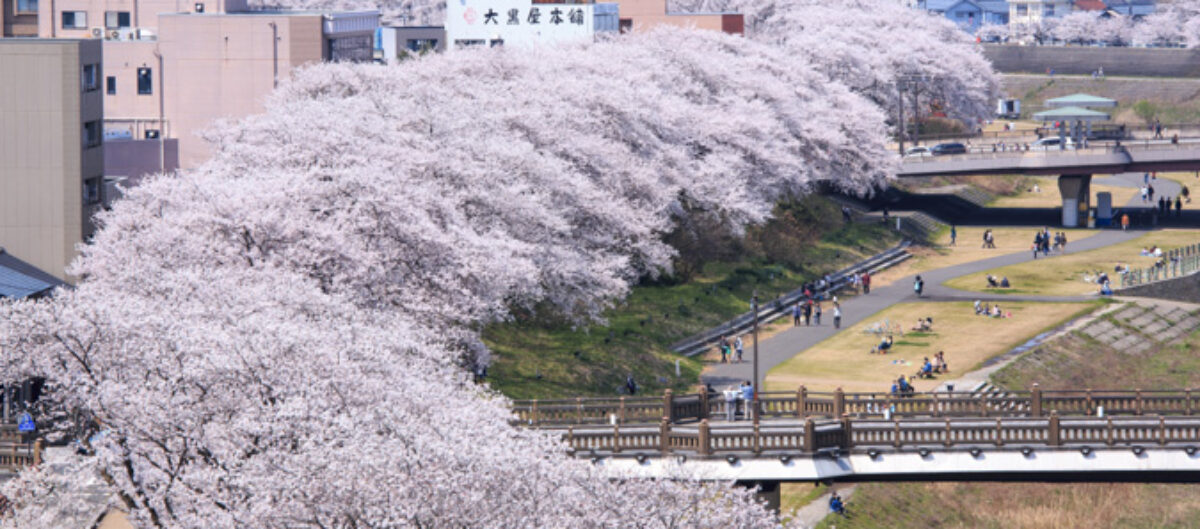
June/19/2019
Do you know a Japanese manga called Chihayafuru(ちはやふる in Japanese)?
It features
Where does this title Chihayafuru come from?
It comes from the poem Hyakunin Isshu, by Ariwara no Narihira, who was born in 825 and is one of the six best waka (Japanese poem) poets.
The poem is as follows:
○「ちはやぶる(Chihayaburu or Chihayafuru) 神代も聞かず 龍田川 から紅に水くくるとは」(in Japanese).
○「Even the almighty gods of old never knew such beauty: on the river Tatsuta in autumn sunlight a brocade ―reds flowing above, blue water below.」(Translated to English by Peter McMillan.)
The poem explains the beauty of the red autumn leaves on the water of the River Tatsuta. There are a lot of explanations of the poem, but it’s said that it’s about love. It means that my strong love for you makes the river red.


What does chihayafuru mean?
It means tremendous power. For example, a high-speed spinning top is very stable but has a tremendous power to repel anything. This is chihayafuru.
Karuta competitions are very popular in Japan, and about a million people take part. Since there are a lot of strong karuta players in Fukui, it’s known as the Karuta Kingdom.
It’s said card games were first developed in Egypt, Persia (Iran), and China. They spread to Europe in the 14th century, and after that playing cards became popular around the world. Card games came to Japan in the 16th century.
There are a lot of different kinds of card games throughout the world, and
Hyakunin Isshu is a classical Japanese anthology of a hundred Japanese poems by a hundred poets. It was compiled by the poet Fujiwara no Teika in the 13th century.

Hyakunin Isshu is about love, the four seasons, traveling, and saying farewell, but almost half of the poems are about love. Hyakunin Isshu and

Until recently, on New Year’s
It’s said that Hyakunin Isshu was the first Japanese literary work to be translated into English. It was translated in 1865. The English version of Hyakunin

I’d like to explain the rules for playing competitive karuta.
This is a game for two people. You use two sets of cards: cards that are read and cards that are grabbed. The reading cards contain the complete poems of Hyakunin Isshu. The grabbing cards contain the last few lines of the poems. The grabbing cards are placed between the players one by one. As one reader reads a reading card aloud, the players try to grab its associated card from the grabbing cards. If you touch the card first, you win.
The players need to display flexibility and stamina, so competitive karuta is called ‘a martial art on tatami.’

Are there professinal Karuta players?
No. All Karuta players are an amateur. They have a job to earn a living.
There are following poems in Hyakunin Isshu:
1.Cherry blossoms,
on this quiet
lambent day
of spring,
why do you scatter
with such unquiet hearts? (Ki no Tomonori)
2. Have you changed?
I cannot read your heart.
But at least I know
that here in my old home
as always the plum blossom
blooms with fragrance
of the past. (Ki no Tsurayuki)
3. Just because you said,
‘I’m coming right away,’
I waited for you
all through the late
autumn night,
but only the moon
came to greet me
at the cold light of dawn! (Priest Sosei)
(Translated by McMillan Peter)
Hyakunin Isshu poems were composed over 1,000 years ago. However, it’s plain to see that people who lived then had the same emotions as people today.

In Chihayafuru, there’s a man named Wataya Arata, who’s a friend of Chihaya and also her idol, and Chihaya calls him the god of
Since Arata was born in Awara, Awara is considered one of the holy places of Chihayafuru. A lot of big fans of Chihayafuru come to Awara to take in the scenery.
Next, I’ll write about a karuta competition(The 51st National Women’s Competitive Karuta Tournament in Awara, Fukui prefecture.), a Chihayafuru exhibition, and Chihayafuru’s holy places in Awara.
(References)
「英訳詩・百人一首」(著:McMillan Peter)(翻訳:佐々田雅子)(集英社)
「図説 地図と由来でよくわかる!百人一首」(監修:吉海直人)(青春出版社)
「1冊でわかる百人一首」(監修:吉海直人)(成美堂出版)
「ちはやふる 第2巻、第11巻」(末次由紀)(講談社)
「ちはやふるの秘密」(英和出版社)
「瞬間の記憶力」(楠木 早紀)(PHP研究所)
「カルタ」(著:宮本貴美子、 木村浩司) (監修:大牟田市立三池カルタ記念館)
